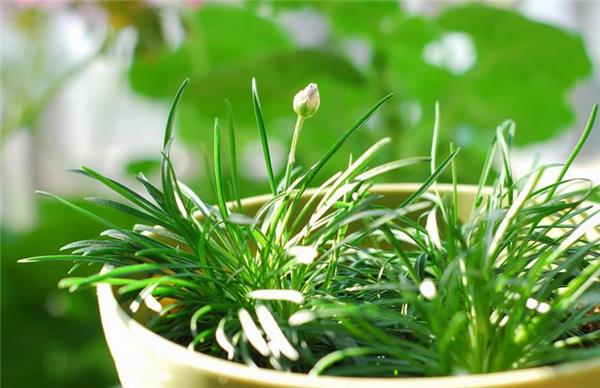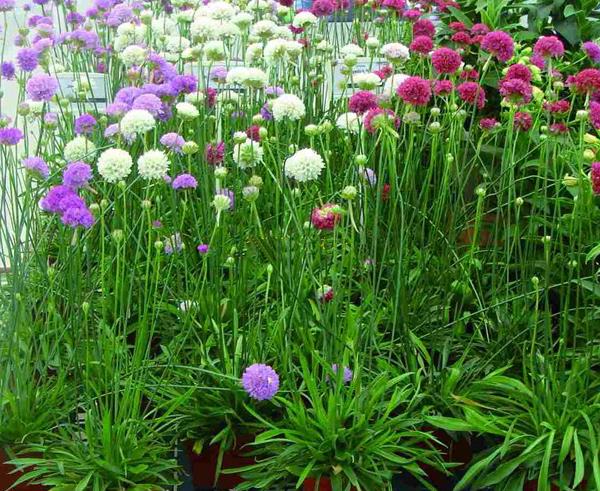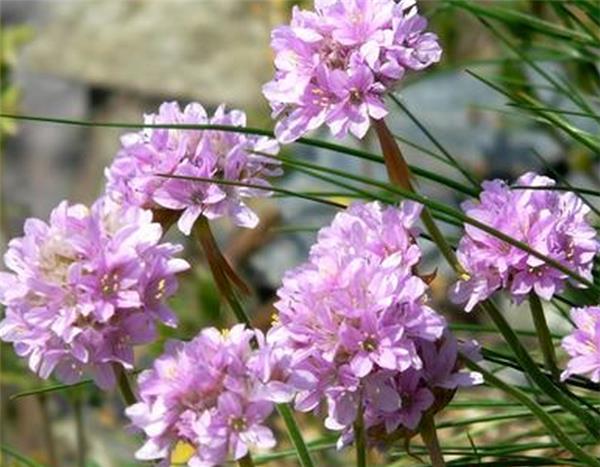Introduction and culture methods of the sea-watching plant Dianthus caryophyllus
Carnation used to grow in the seaside of small flowers to form a dense ball, group planting can form a very beautiful landscape, is a very lovely flowers, now let's have a look.

I. introduction of Carnation
Carnation is a perennial herb of Caryophyllaceae and Caryophyllus, which is native to Europe and America. The colors of carnation are pink and white. The persistent root plants of Cerambycidae native to southern Europe can be roughly divided into two strains: broad-leaved species and fine-leaved species. The flowering period of carnation is about March to June, the pedicel is drawn from the leaves, and the front end of the pedicel will be covered with small flowers of globular heads, just like ancient hairpins, so it is called hairpin flowers. After the flower of fine leaf species, dark green needle-shaped leaves also have the function of lawn if planted one.

2. Cultivation techniques of Dianthus chinensis
1. Cultivation substrate
The rotten leaf soil rich in organic matter is the best for carnation.
two。 Temperature and light
The suitable temperature for the growth of carnation is 15-25 ℃. During the growing period, sufficient light is required to be placed in a sunny place, and scattered light is suitable in summer to avoid hot sun exposure. When the temperature is high, it should be shaded and cooled down.
3. Fertilizer and water management
Carnation does not need much fertilizer, so the 1000 times dilution of Huabao No. 2 should be applied once every 2-3 weeks. Watering should be appropriate, high temperature, low water temperature or pouring a lot of water when the temperature is high after a long drought will cause damage to the root system of Carnation.
4. Planting essentials
(1) germination conditions of carnation (temperature, soil mulching, light requirement, etc.): 20-21 ℃
(2) the days required for germination: 4-10 days
(3) the suitable temperature for the growth of Carnation (daily temperature / night temperature): 10-13 ℃
(4) Light requirement of growth and other growth conditions: partial shading or partial light.
(5) the time from sowing to flowering (or harvest): 14-17 weeks
(6) height of ground planting (rice): 35-60
(7) Carnation uses: flower beds and large container cultivation

Third, the value of carnation.
1. Ornamental value
The cultivation of carnation plants is high and low, and it is widely used in horticulture. It can be used not only as potted plants, but also as flower beds, landscape arrangements and rock courtyards. It is a spring flowering plant, and its small plant shape is popular with people. During the flowering period, a large number of pink rose flowers bloom on compact plants. Bright colors, long-lasting florescence and dark green grass-shaped leaves are very popular.
two。 The Landscape use of Dianthus chinensis
Carnation prefers sandy soil with adequate sunshine and good drainage, which can be used as flower beds, flower borders, rock gardens, cut flowers and potted flowers. The posture of sea carnation is small and lovely, with bright colors, which is suitable for beautifying flower beds, small potted plants or making ground covers.

Fourth, the flower language of Carnation.
Sea carnation language: sympathy.
Flower etiquette: it can be made into a bouquet of dried flowers, knotted with a checked ribbon, loaded with a pin and put into a gift box.
The above is the knowledge of carnation. I hope I can help you.
Related
- Wuhan Hospital Iron Tree Blooming Result Was Instantly Frightened by the Gardener Master
- Which variety of camellia is the most fragrant and best? Which one do you like best?
- What is the small blue coat, the breeding methods and matters needing attention of the succulent plant
- Dormancy time and maintenance management of succulent plants during dormancy
- Minas succulent how to raise, Minas succulent plant pictures
- What are the varieties of winter succulent plants
- How to raise succulent plants in twelve rolls? let's take a look at some experience of breeding twelve rolls.
- Attention should be paid to water control for succulent plants during dormant period (winter and summer)
- Watering experience of twelve rolls of succulent plants
- Techniques for fertilizing succulent plants. An article will let you know how to fertilize succulent plants.



